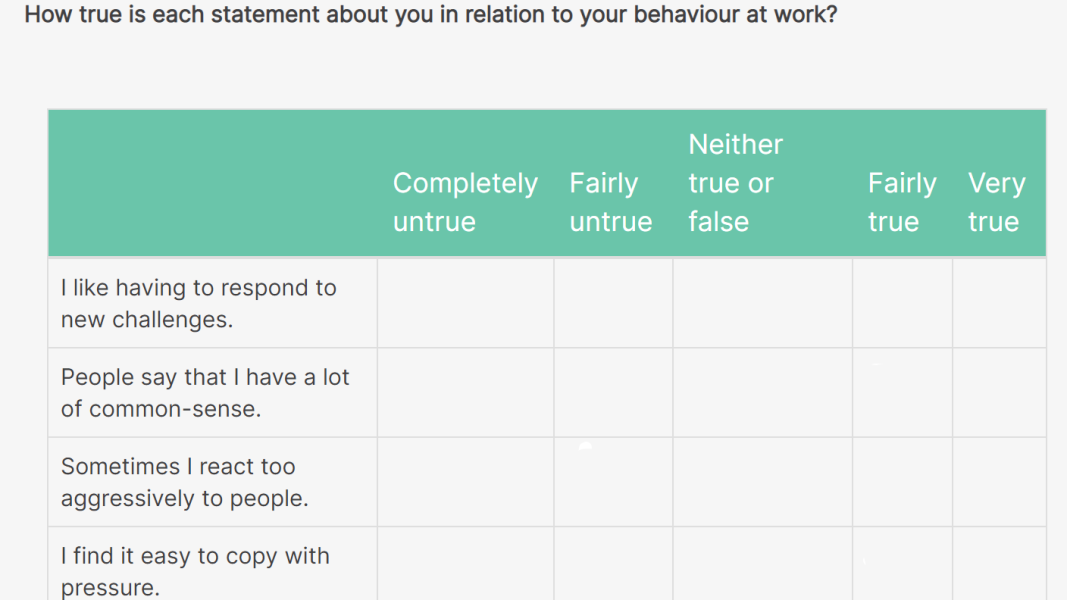What is Talent Q?
Talent Q tests were first developed in 2006 by Roger Holdsworth, a leading assessor who also co-founded the testing company SHL.
He wanted to design a new approach to assessing people; tests that adapted to the candidate taking them to get more insightful results. This innovative approach is one of the reasons Talent Q tests remain so popular worldwide.
In 2014, Talent Q was acquired by the Hay Group, and since then the tests have been administered by Korn Ferry – so you’ll see this name used a lot in conjunction with Talent Q tests.
Now, Talent Q tests are available in over 40 different languages and used by firms including Lloyds, RBS and Ford.
What makes Talent Q tests different?
Firstly, Talent Q tests are what’s known as ‘adaptive.’ This means they automatically adapt to fit the ability of the person taking the test.
If the candidate gets a question right, a more complex problem will follow; if they get one wrong, the next question will be slightly easier.
The benefit of this for employers is that it ensures candidates are working at their maximum performance level. This in turn allows a more nuanced assessment from an employer’s point of view.
As well as being adaptive, Talent Q tests are also ‘blended’. Assessment types can be mixed together to analyse the individual taking it in different ways.
Talent Q tests are also more challenging than most comparable tests. Questions are made more complex by the inclusion of lots of irrelevant data or information, as well as more possible answers.
All of these tactics are designed to throw people off the scent and make it harder to determine the correct answer.
The time in which you have to complete each test is another factor that makes Talent Q challenging, and is one of the many reasons why practising as many tests as you can is so important.
Talent Q test categories
The different Talent Q tests are designed to cover all aspects of a candidate’s strengths, weaknesses, skills, motivations and competencies.
There are five different Talent Q test categories:
- Elements
- Aspects
- Dimensions
- Motivations
- Situational judgement tests
Elements
Primarily designed for graduate and managerial recruitment, the Elements tests assess a candidate’s verbal reasoning, numerical reasoning and logical skills.
You’ll be asked questions on passages of text, numerical data or the arrangement of various shapes and symbols (depending on whether you’re taking the verbal, numerical or logical test). Overall, you’re being assessed on how adept you are at spotting errors, patterns and inconsistencies.
Each assessment gives candidates a maximum of 15 minutes to work through all of the questions. For the verbal test you’ll be required to answer 15 questions, and for the logical and numerical tests, 12 questions.
Practising these tests beforehand will help you to get faster and more accurate, which is essential as the Elements test is not easy.
Here is an example of a typical Elements numerical question. Have a go and see how quickly you can solve the problem:
Credit: https://www.trytalentq.com/
Answer: You can see above that a basic contract entitles you to 3 hours of free calls per month. Multiply that by 12 months to get 36 hours of free calls per year.
Aspects
Aspects is a competency-based test designed to assess your behaviours, and the character traits you’re likely to display in the workplace.
Employers tend to use this test at the earlier stages of recruitment, when they want to get a quick and accurate picture of which candidates have the characteristics they’re looking for.
The tests only take eight minutes to complete, so it’s low-time investment for both candidate and employer.
There are two different types of Aspects tests:
- Aspects Ability — most commonly used for hiring sales or customer service positions, this test looks at a candidate’s verbal, numerical and accuracy skills.
- Aspects Style — a questionnaire that assesses your workplace persona against the key competencies needed for success in the role.
Here is an example of an Aspects Ability question; take a look to familiarise yourself with the language and format.
Credit: https://www.trytalentq.com/
Answer: They are the same in rows 2, 3 and 5.
Dimensions
Dimensions is perhaps best summed up as a personality questionnaire.
The questionnaire looks at how you like to work, how you manage relationships, how you communicate and how you approach your daily tasks, as well as what motivates you to succeed.
It’s an indicator of how you’re likely to fit into the team and company, how they can engage and retain you, and how they can work with you to maximise your personal and professional success.
The way it works is very simple. You’ll be presented with a series of statements which you’ll have to rank from ‘very true’ to ‘completely untrue’, depending on how you feel. This information can then be used to generate all of the following:
- Trait profile — your individual traits.
- Behaviour at work profile — how you prefer to do things at work.
- Team profile — how well you’re likely to work as part of a team.
- Sales profile — how adept you are at sales.
- Role match profile — how well your character matches the essential traits of the role you’re applying for.
- Derailment report — the potential areas to watch; which parts of your character will be tested in times of stress or pressure?
- Potential report — your potential for leadership based on your individual character.
Here is an example of a Dimensions question:
Credit: https://www.trytalentq.com/
Motivations
Just as the title suggests, this test looks more closely at an individual’s motivations for success, what drives them and what they value most.
Getting access to information like this before you hire someone is valuable to an employer. It can help them to tailor elements of the role, ensure the chosen hire gets the best out of their time at the company, and it can do wonders for the success of both the individual and the business as a whole.
When you get the questionnaire, you’ll see a series of statements relating to areas that may motivate someone to work harder to excel at a job. You’ll need to rate them from ‘not important’ to ‘extremely important.’
It goes without saying that honesty is always the best policy. Just as the employer is looking for the right candidate, it’s important to remember that you are also looking for the right job and it’s only in answering the questions truthfully and openly that you’ll find what you’re looking for.
Talent Q situational judgement tests
Talent Q’s situational judgement test is designed to assess how you respond to commonplace work challenges.
You’ll have to read through a series of different scenarios and select your preferred response from a list of possibilities. How you’ve elected to respond will then be compared to the requirements of this particular role, to see if you’re a good fit.
Again, it’s important to be honest, but it’s also worth bearing in mind the particular requirements of that role. For example, if it’s a sales job you’re applying for, it’s likely that an employer will be looking for someone who shows a natural aptitude for customer service and communication.











